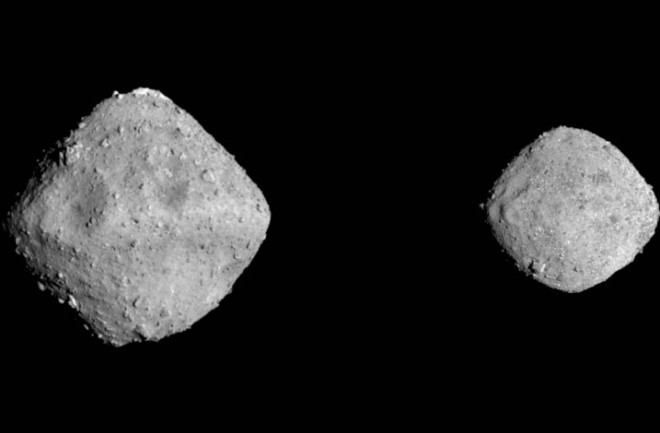Fifty shapes of grey: the shapes of asteroids
Marco Fenucci (@OnFenu) - May 4, 2021
How are asteroids shaped?
We all know that planets and large satellites, incuding our Earth and Moon, are sphere shaped. This happens because gravity has a spherical symmetry, i.e. the gravitational force is the same in all the directions. When the mass of an object is big enough (like a planet), the material is pulled towards the center of gravity. The most efficient way to put material as close as possible to a center of attraction is to arrange it to form a sphere, and this is why planers are rounded.
Most of the asteroids however are small, and their mass is not big enough to contrast material's strength to form a sphere. The only exception is 1 Ceres, the biggest and first discovered asteroid in 1801 by Italian astronomer Giuseppe Piazzi.
Big asteroids (such as 2 Pallas, 4 Vesta or 10 Hygeiea) are almost spherical and their surface often present craters due to impacts. On the other hand, smaller objects come in a large variety of shapes and they are mostly irregular. For example, 433 Eros and 25143 Itokawa look like big potatoes, while 4179 Toutatis is composed by two distinct lobes gathered together, resembling a body with a head. Another beautiful example is 216 Kleopatra, a main belt asteroid shaped like a dog's chew bone about 200 km across.
More recently, missions Hayabusa2 and OSIRIS-REx visited 162173 Ryugu and 101955 Bennu, respectively. Images taken with spececraft's cameras revealed that these asteroids are surprisingly diamond shaped. Pictures of Ryugu and Bennu can be seen in Figure 1.


How are shapes determined?
Asteroids are so small that when we observe them with a telescope, they appear as small faint dots, moving with respect to the fixed stars in the background. Therefore, even their dimension cannt be determined with optical observations alone, and other techniques need to be used to determine their shape.
The most obvious and accurate method is to send aspacecraft around it, and take several photos from different views. However, sending a spacecraft in the outer space is very expensive, and only a few number of objects can be visited.
An alternative is to observe the asteroid by means of a radio telescope. Radar observations permit to constrain the dimension, the rotation period, and the shape fairly accurately. As a downside of this method, only asteroids passing very close to the Earth can be observed by radar.
Another technique used by astronomers is to study the amount of light reflected by an asteroid as it rotates, the so called lightcurve. Figure 2 depicts how a lightcurve works. Using a shape model it is possible to make a prediction of the amount of light reflected. Then, by comparing the measurements with model predictions, the shape of the object can be reconstructed.
Some reconstructed asteroids shape can be seen in the tool below. Select an object, scroll to change the dimension and drag with the mouse to rotate.
Share this content:

